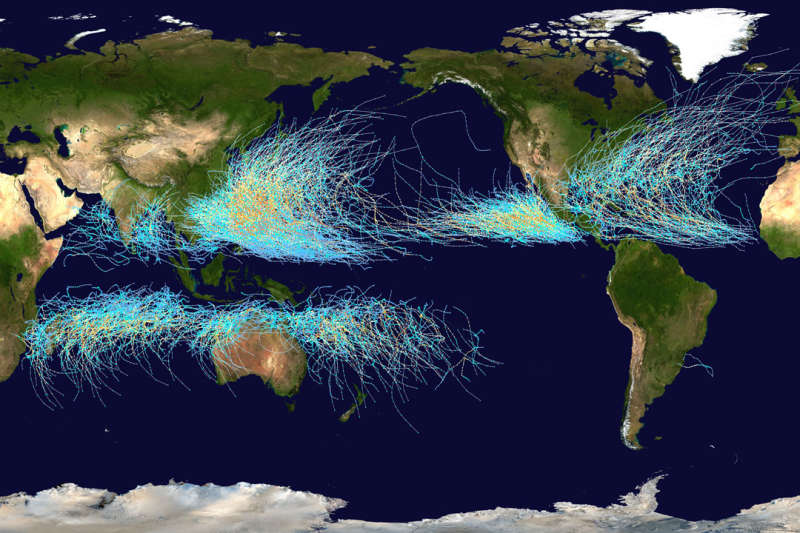Cyclone Paths on Planet Earth

Explanation:
Where on Earth do cyclones go?
Known as hurricanes when in the Atlantic Ocean and typhoons when in the Pacific,
the featured map shows the path of all major storms from 1985 through 2005.
The map shows graphically that
cyclones
usually occur over water,
which makes sense since evaporating warm water
gives them energy.
The map also shows that
cyclones never cross -- and rarely approach -- the
Earth's equator,
since the Coriolis effect goes to zero there,
and cyclones need the Coriolis force to circulate.
The Coriolis force also causes
cyclone paths to arc away from the equator.
Although long-term trends remain a
topic of research, evidence indicates that
hurricanes have become, on the average,
more
powerful in the North Atlantic over the past 30 years,
and their power is
projected to keep increasing.
Follow APOD on Instagram in:
English,
Farsi,
Indonesian,
Persian, or
Portuguese
Authors & editors:
Robert Nemiroff
(MTU) &
Jerry Bonnell
(USRA)
NASA Web Site Statements, Warnings,
and Disclaimers
NASA Official: Jay Norris.
Specific
rights apply.
A service of:
LHEA at
NASA /
GSFC
& Michigan Tech. U.

